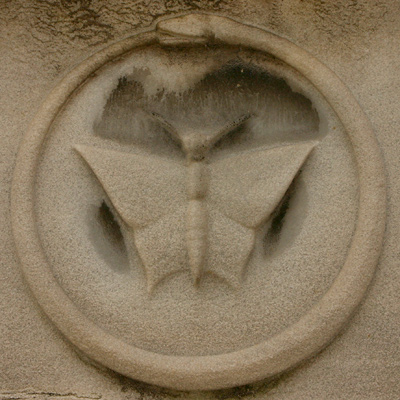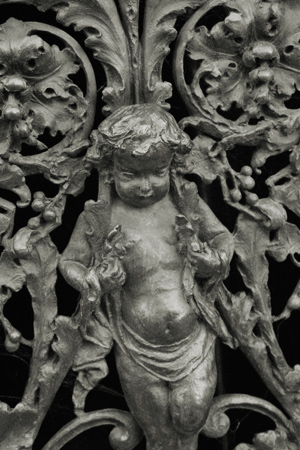
Documenting Recoleta Cemetery in Buenos Aires since 2007
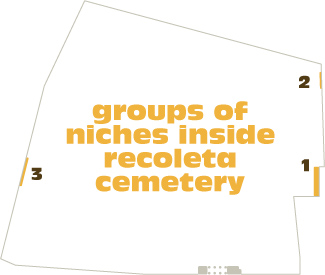
Three groups of niches can be found against the walls of Recoleta Cemetery. Closest to the entrance, group #1 is the fanciest of them all. It consists of a small, Art Deco sanctuary with two gates & no public access. Built by architect Bruno O. Fritzsche in the late 1920s for a cost of 180,000 pesos, these niches were part of a city-wide project to increase the number of burial spaces available in Buenos Aires. All sketches courtesy of Historia Digital:

Decoration consists of pairs of inverted torches & a couple phrases in Latin. One reads Aequo pulsat pede which is taken from the odes of Horace. The full sentence Pallida mors aequo pulsat pede pauperum tabernas regumque turres translates to “Pale Death with impartial step knocks at poor men’s hovels and princes’ citadels.” In other words, death doesn’t discriminate based on wealth or status… we’re all equal:
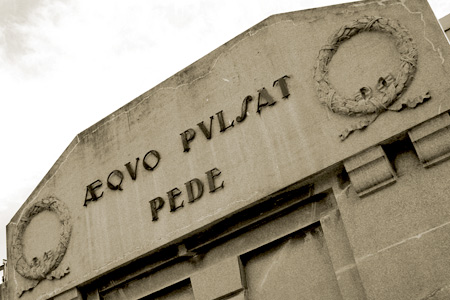
Another bit of wisdom from Horace is over the second gate. Non omnis moriar means “I shall not wholly die.” The memory of a loved one never truly fades away:
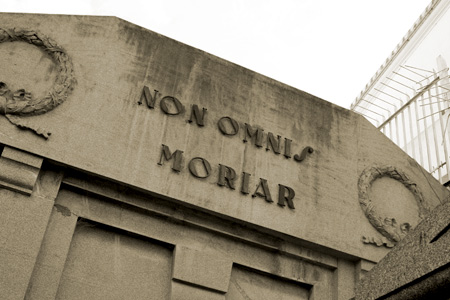
Peeking inside, a staircase leads to more niches underground & still more Latin. But this time it’s from the Book of Job 8:9… Our days upon Earth are but a shadow:
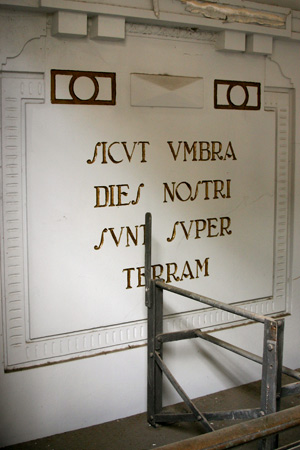
Group #2 is in desperate need of repair. Most of the lower covers have broken over time leaving caskets exposed. Makeshift covers of sheet metal keep the elements at bay until restoration work can begin. A corner addition in the 1920s (also by Fritzsche) means there’s even more room below ground:
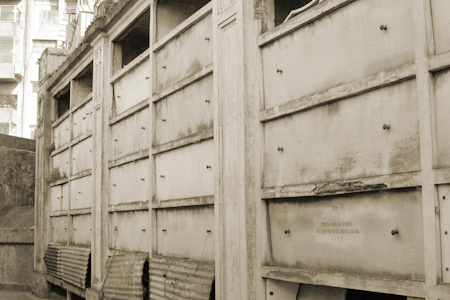

Group #3 is the largest & occupies a big portion of the south wall. Whereas the other two groups place caskets lengthwise, this one can fit many more by inserting caskets the opposite direction:
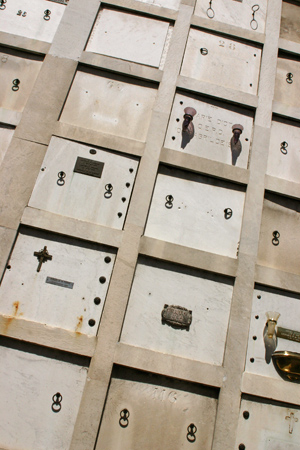
When a wall of niches is this tall, ladders can’t be used by caretakers to access the upper rows. So how to they get those heavy caskets to the top? The answer is right here… A chain pulley on wheels. It must take a lot of effort since the pulley is manually operated, but no one said being a caretaker was easy:
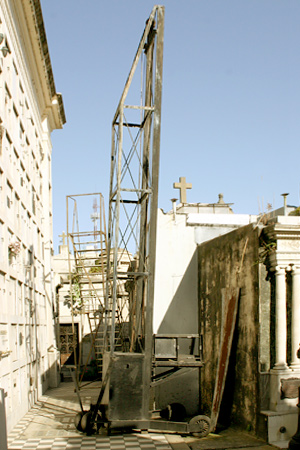
One of my favorite photo tricks in Recoleta Cemetery is incorporating exteriors & interiors in the same image. Stained glass windows become great focal points when combined with the reflection from the vault door. Here’s an example:
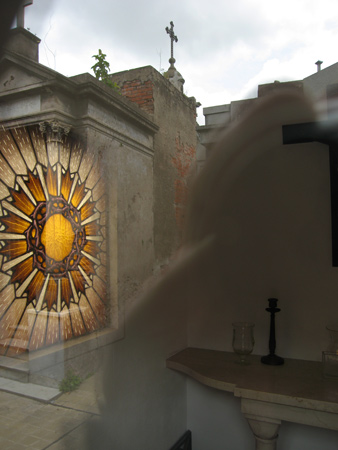
By focusing on the stained glass with the correct lighting, a compound image is easy. In the next pic, an illuminated María looks down on a tourist with a map:
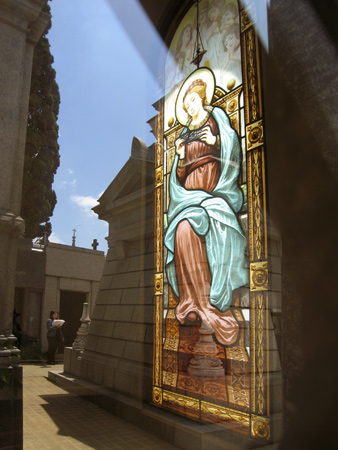
Or Jesus is taken down from the cross… like the one in the background:
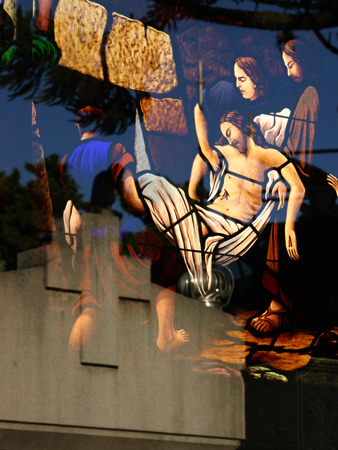
A combination of exteriors can be interesting as well:
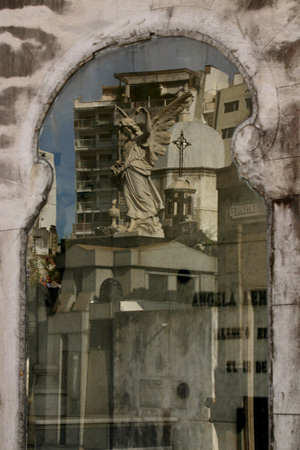
To take photos like these, adjust your vision when looking inside vaults. Sometimes the reflection is more rewarding than the interior itself. They can be everywhere from a pool of water to black granite.
Leave a CommentDuring my first visit to Buenos Aires in March 2000, I was like every newbie in town. I wanted to see where Eva Perón was buried… assured that seeing her tomb would spark some kind of epiphany. The only problem was that there was no map to guide me. I could have asked anyone, but I challenged myself to find Evita on my own. It took me FOUR visits to the cemetery until I finally stumbled upon the site. At least I got a good overview of the cemetery while awaiting that discovery.
After moving to Buenos Aires at the end of 2000, I rarely visited the cemetery. I didn’t know what to make of it, nor did I really understand its importance. In July 2003 I noticed a map had finally been posted at the entrance gate. Hand-drawn with 85 spots to visit, it was hardly impressive or practical. But it was better than nothing:
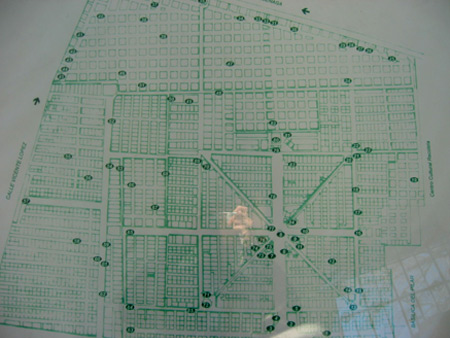
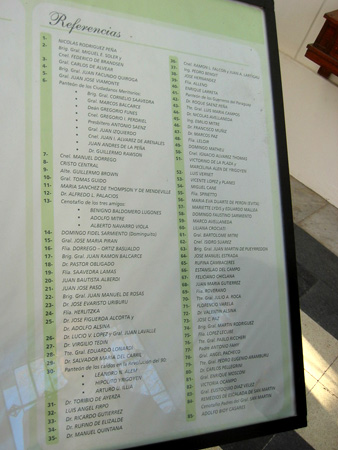
I was beginning to realize that something had to be done…
Read the complete story in the following posts titled “map development”: Part 2, Part 3, Part 4, Part 5, Part 6 & Part 7. Good news! The PDF guidebook is now available.
4 CommentsTaken from a Greek phrase meaning “tail devourer,” this ancient symbol of a serpent eating its tail is perfect for a cemetery. Representing an eternal cycle of renewal, death is not seen as an end… it’s another beginning.
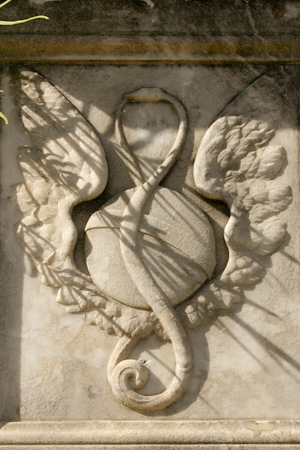
The serpent is often accompanied by a sphere—another symbol of eternity—or some other circular form. The ouroboros on front gate is difficult to make out from a distance:
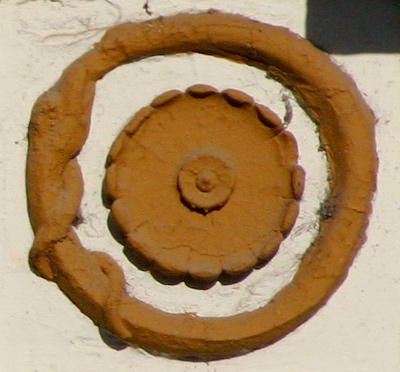
Another beautiful example is on the Demarchi y Quiroga family vault. For an explanation of the moth, see this post:
